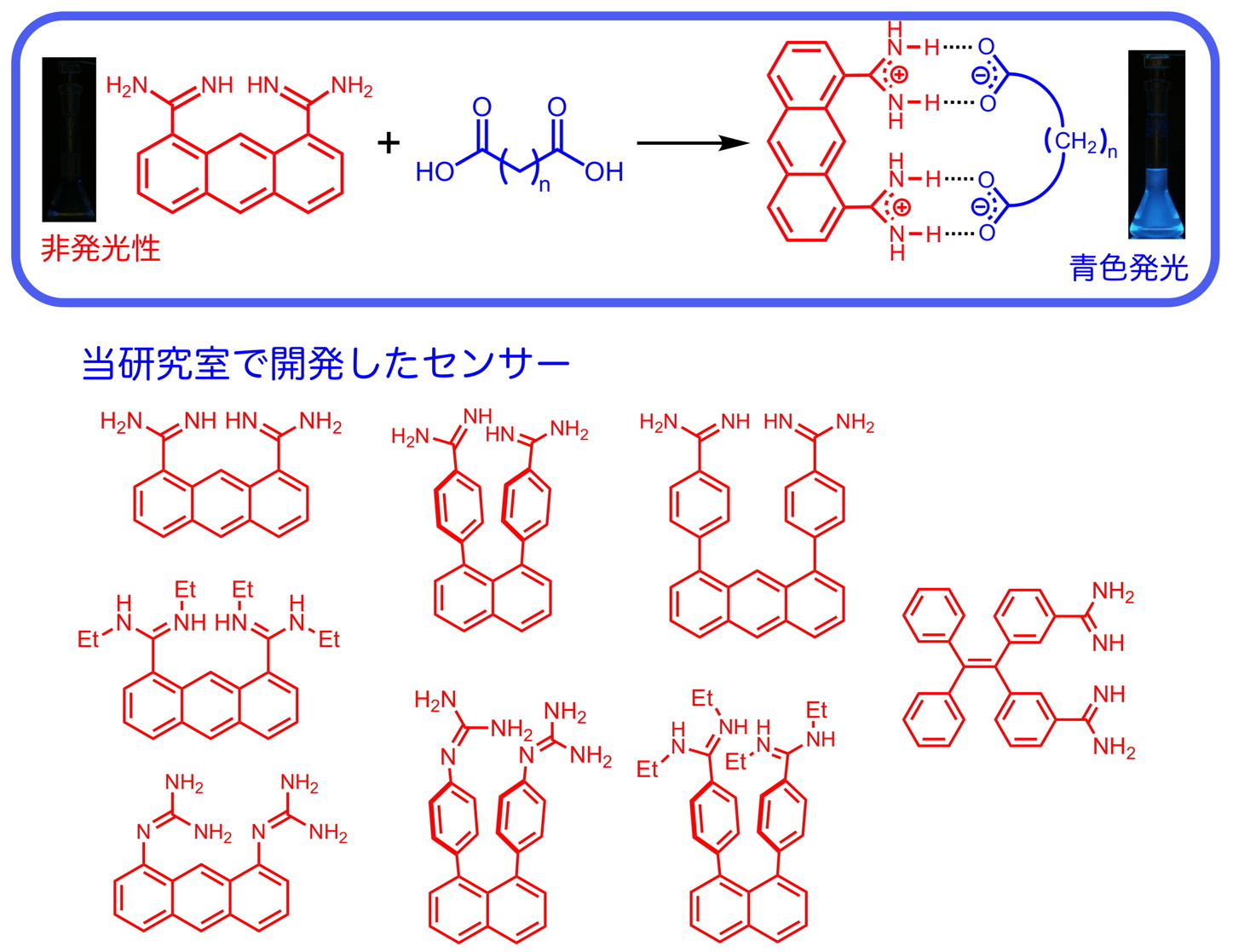Research
Development of fluorescent emission sensors for medical diagnosis
Fluorescent emission sensors, which detect specific molecules, have been applied in various fields such as medical diagnosis because of their high detection sensitivity and simplicity of analysis. We have found that amidines, in which two or four amidino groups are substituted for fluorescent molecules, form stable aggregates with dicarboxylic acids and show specific fluorescence emission, and have successfully detected dicarboxylic acids in human urine. By detecting dicarboxylic acids in urine, it is expected to be used as a sensor to quickly and easily detect metabolic disorders such as dicarboxylic aciduria. By synthesizing fluorescent and emissive amidines with various molecular structures, we are developing sensors that recognize and emit dicarboxylic acids with specific methylene chain lengths and emit different colors depending on the methylene chain length.
Development of fluorescent emission sensor to detect traces of chemical warfare usage
近年、戦争・紛争・テロなどでの化学兵器(化学剤)の使用が増加している。有機リン系化学剤は容易に気化や分解が進行するため、成分の特定やその使用を裏付けるのが困難であり、被災者の治療開始に時間を要することなどが問題となっている。当研究室では、サリンやソマンなどの有機リン系化学剤の分解物であるメチルホスホン酸やメチルホスホン酸モノエステルを認識して蛍光発光を示すセンサーの開発を行っている。懐中電灯型ブラックライトを使用することで、電気のない戦場・テロ現場でも検出可能な分析方法の開発を目指している。
機械的刺激に応答する蛍光発光性分子の開発
近年、すりつぶしなどの力学的刺激によって蛍光発光色の変化を引き起こすメカノフルオロクロミック材料が注目されている。これらの材料は圧力などの外部刺激のセンサーとしての利用や、刺激を与えたところのみ色が変化する特性を利用して、書き換え可能な記録デバイスなどへの応用が期待されている。メカノフルオロクロミック分子の多くが、金属原子や多数の芳香族環を含んでおり、シンプルな化合物での報告例は少ない。当研究室ではアントラセンにフェニル基が置換したシンプルな構造のフェニルアントラセン誘導体の固体が、すりつぶしを行うことで発光色が変化するメカノクロミズム特性を示すことを見出した。また、すりつぶし後の固体は加熱や溶媒蒸気に曝すことで、もとの発光色を示し、可逆的に発光色をコントロールできることを明らかにしている。



